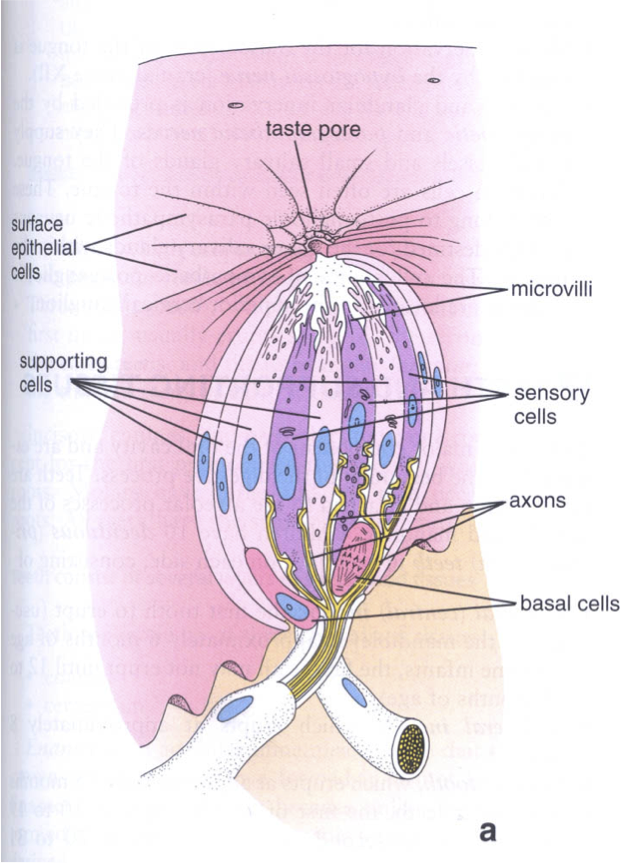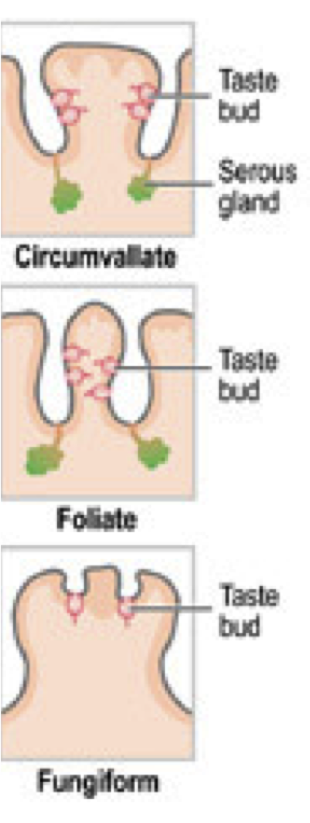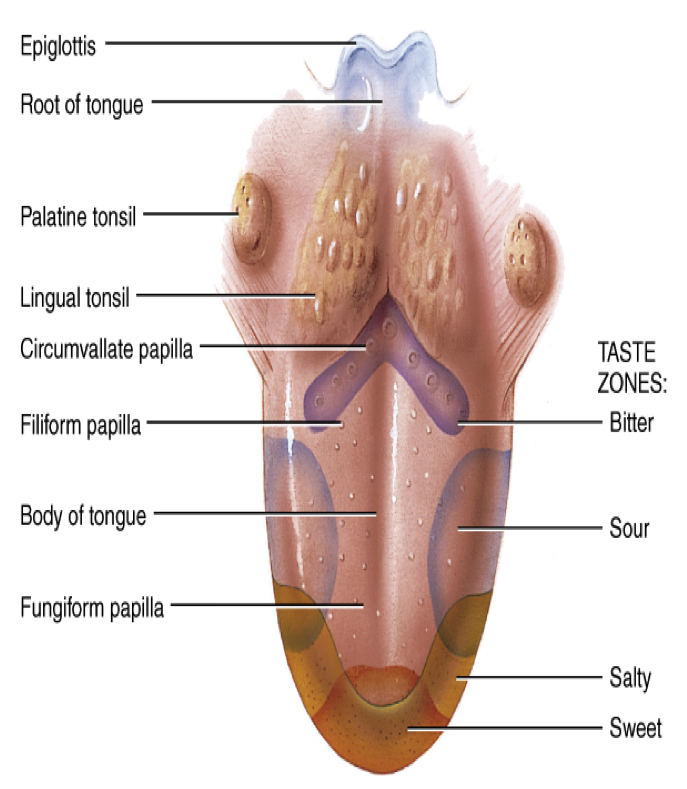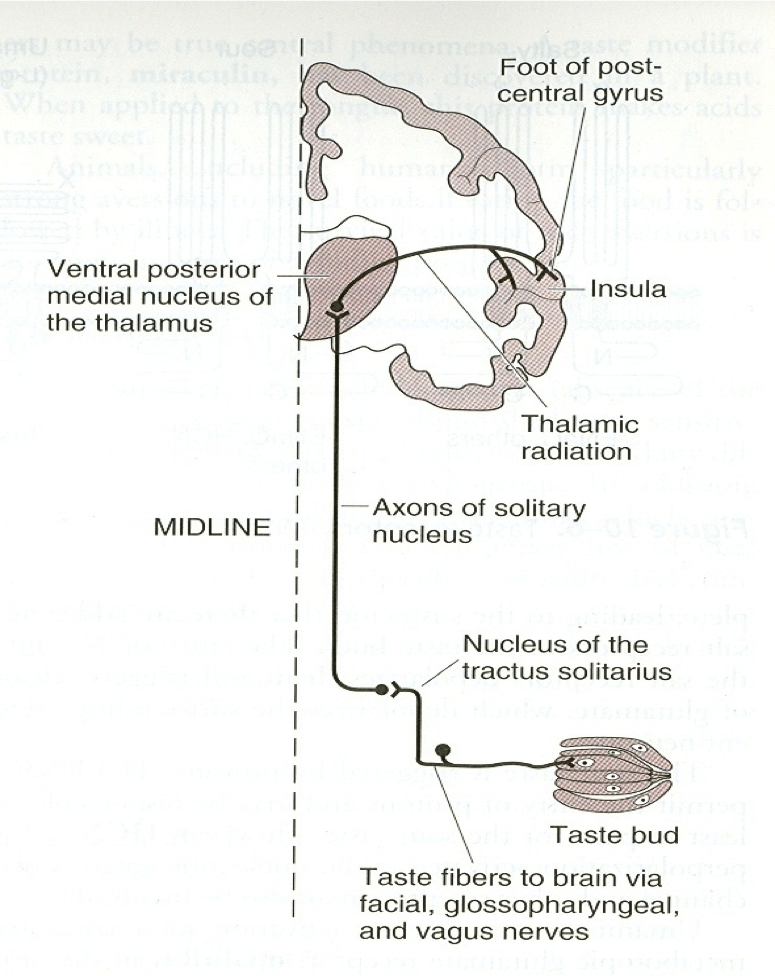A. Structural components requiredg:
1. The sensors that register “taste” are the taste buds located in the oral cavity (= the mouth!).
|
2. These taste buds, some 5,000-10,000 of them, are located primarily on the surface of the tongue but some are also located on the soft palate, the inner surface of the cheek, in the pharynx wall, and on the epiglottis of the larynx. |
3. A typical taste bud consists of 50-100 cells that are of three different types:
|

|
4. The supporting cells are the strong cells that support the whole structure of the taste bud. |
5. The basal cells are very important because these are the “stem” cells of the taste buds. This is crucial because taste cells do not live very long (10 days or so) and therefore have to be renewed all the time. |
6. The taste cells (also called gustatory cells) are the sensors. They have little hairs sticking out of the surface of the epithelium where they are bathed in saliva. A taste substance to which this cell is sensitive (see later) will attach to a receptor. |
7. The receptor, in turn, will open an ion channel, which then causes an influx of sodium ions. | |
8. The sodium influx will depolarize the cell. The degree of depolarization (= receptor potential) is proportional to the concentration of the stimulating substance. |
9. If the depolarization reaches threshold, an action potential is generated which will got to the brain. |


